The Villa Flora – a total work of art
The Villa Flora is not simply an art museum, but a place where the love of art has been lived and is still lived today. The Hahnloser couple transformed the villa into a home for art – literally on all levels. Here, architecture, design and painting combine to form a harmonious ensemble, and so the Villa Flora has existed – for a hundred years now – as a total work of art.
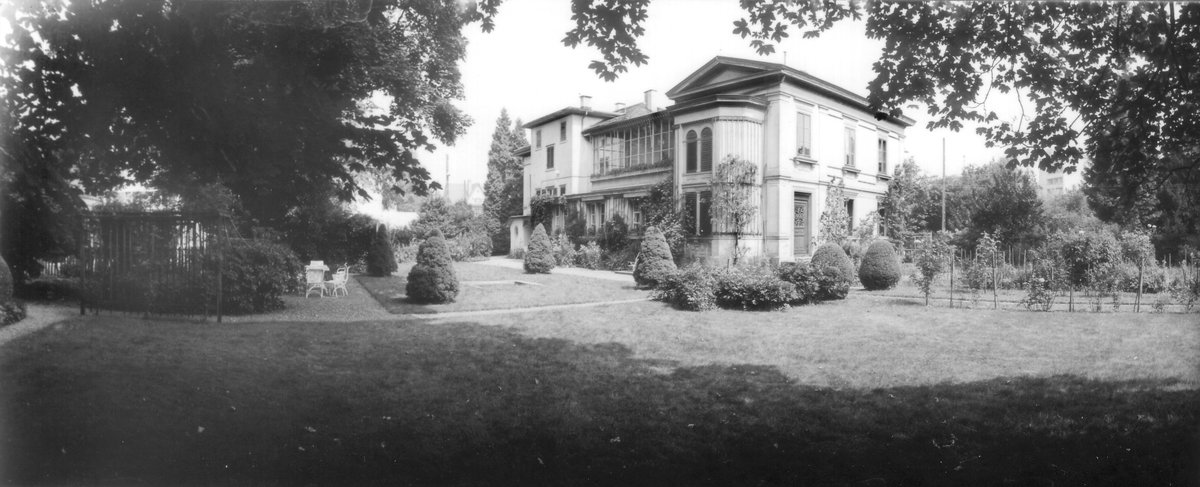
Panoramic view of the garden and villa, around 1970.
Architecture and interior design
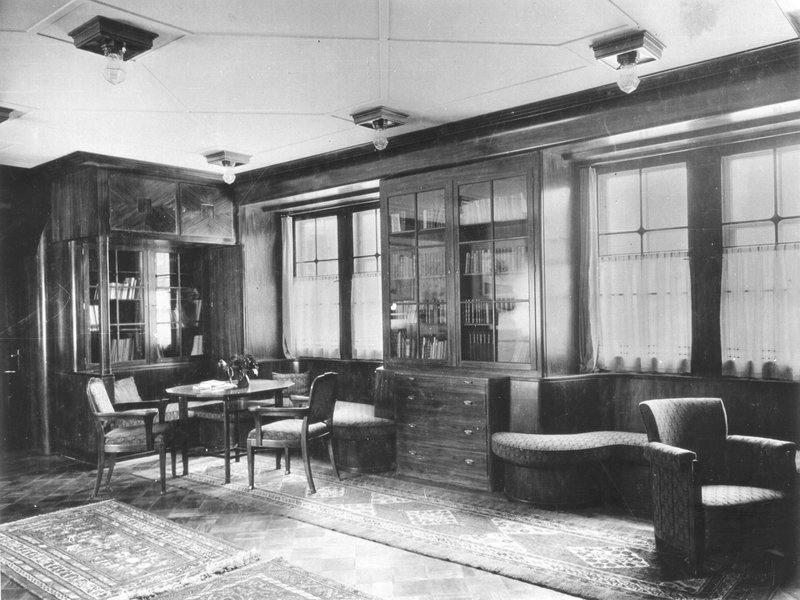
The salon around 1908
The Hahnlosers made a statement with the installation of the salon in 1908. The room did not simply connect the adjoining wing with the main house, but was a commitment to contemporary architecture and interior design. It was designed by architect Robert Rittmeyer, a close friend of the couple, who also helped design the arts and crafts elements such as lamps and wallpaper. He did this in close collaboration with his clients, with Hedy Hahnloser herself being particularly active as a designer. She provided the designs for the wallpaper, for example, most of which is still original today. Before it was installed in the Flora, the entire room was presented to the public as part of the First Zurich Exhibition of Interior Design and celebrated as a 'masterpiece'.
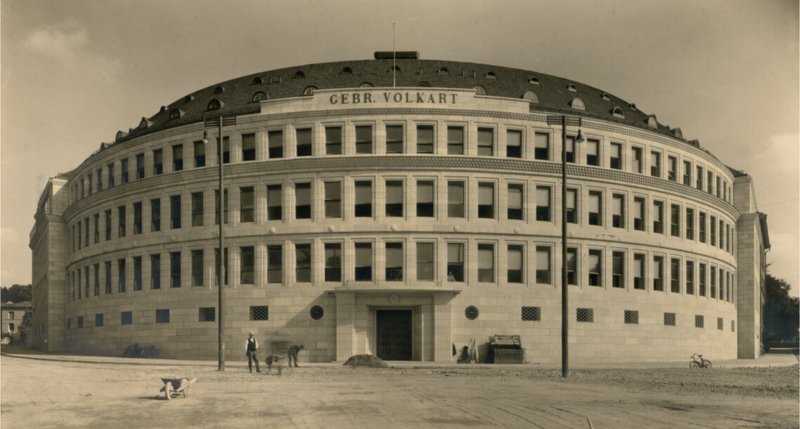
The Volkart Brothers business building by Rittmeyer & Furrer 1927/1928
Robert Rittmeyer was one of the progressive forces in Swiss architecture. With his firm Rittmeyer & Furrer, he shaped the appearance of the city of Winterthur and was also responsible for the construction of the Kunstmuseum, which opened in 1916. His credo was in line with that of modernism: a building should be built from the inside out, i.e. its interior design was just as important as its external appearance. Function and good design should not be sacrificed for the sake of representation and appearance.
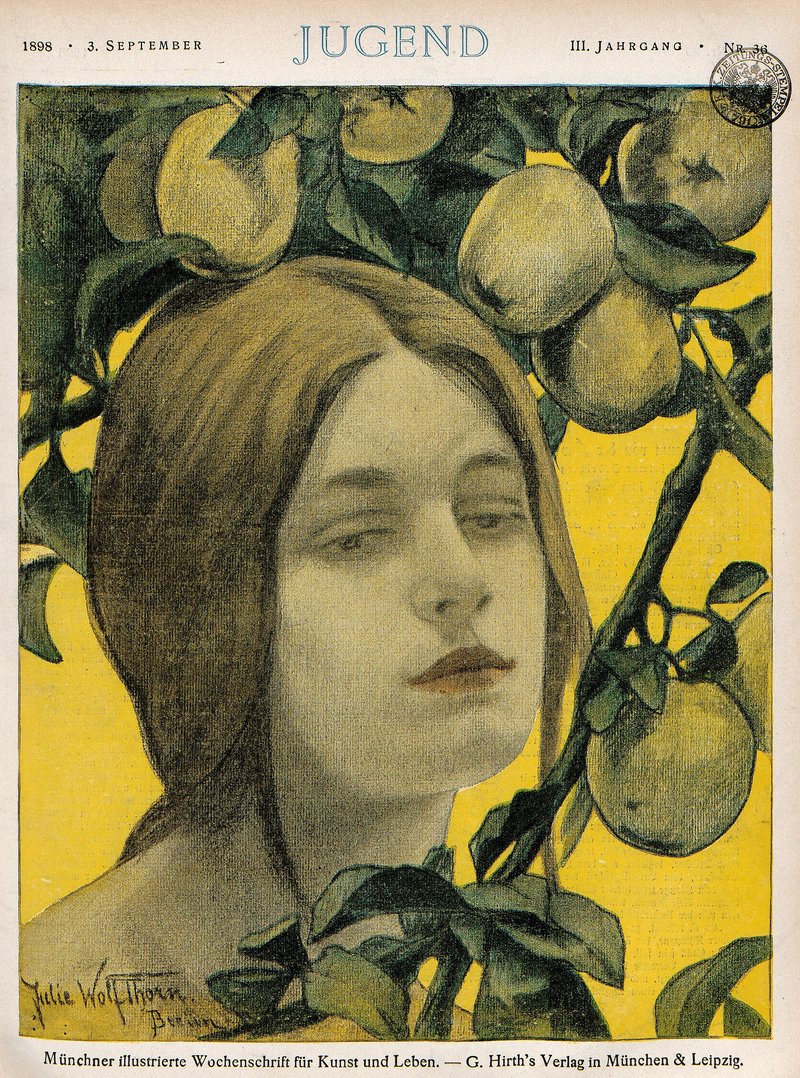
Cover of the magazine Die Jugend 1898
New ideas on how life should be organised were circulating throughout Europe at the time. From the second half of the 19th century onwards, various reform movements offered new ideas, critically examining industrialisation and calling for a return to nature and craftsmanship. These movements also set a new tone in architecture and product design and provided suggestions on how everyday objects and living spaces could be rethought. In England, it was William Morris and the Arts and Crafts movement, in Germany the magazine Die Jugend – which was to give Jugendstil its name – and with avant-garde groups such as the Secession in Vienna or the Darmstadt Artists' Colony, new ideas flourished throughout Europe that pursued a holistic approach. They designed architecture, furniture, clothing and everyday objects under these new auspices and thus combined them with one another.
What Rittmeyer and the Hahnloser couple implemented in the Villa Flora – and later also in the Kunstmuseum – corresponded to this new way of thinking: stylistic unity and simple solidity. In Winterthur society, Rittmeyer's architecture met with both interest and incomprehension, as many felt that his style lacked the pomp and opulence that set the upper classes apart from the rest of the population.
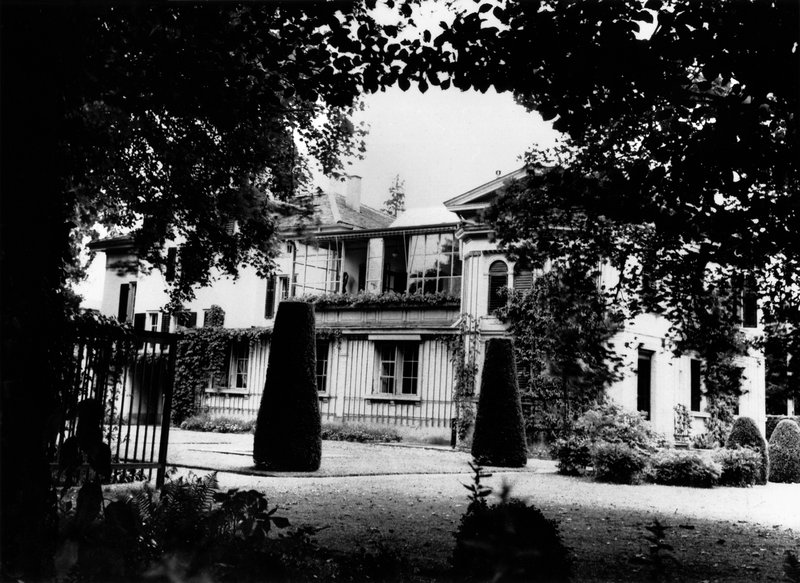
The Flora in a photograph from around 1940
Hedy Hahnloser had always made fun of the display of money and wealth. She herself had grown up in a magnificent house, the Bühlhalde. In direct comparison, the Flora hardly deserves the epithet villa, but seems downright modest. Less modest, however, were her demands on good craftsmanship and art. Even at a young age, she was enthusiastic about product design and was creatively active herself, as the interior design of the Flora bears witness to this day.
Design
Hedy Hahnloser showed an early interest in art and crafts or, as we would say today, design. She had initially aspired to a career as a painter – against her father’s opposition –, for which purpose she went to Munich. There she came into contact with the latest trends in interior design. She soon shifted her creative activities to this area and designed a wide range of objects from cushions and dresses to wallpaper and tablecloths. She built a doll's house for her children, created a wooden model for sale to help save the Castle of Wülflingen and was a member of the Zurich Artists' Association. For her creative work, she set up her own workshop in the annex of Villa Flora. She was particularly interested in fabrics and embroidery. In hundreds of designs, she created ornaments and designs that were characterised by geometric to floral forms.
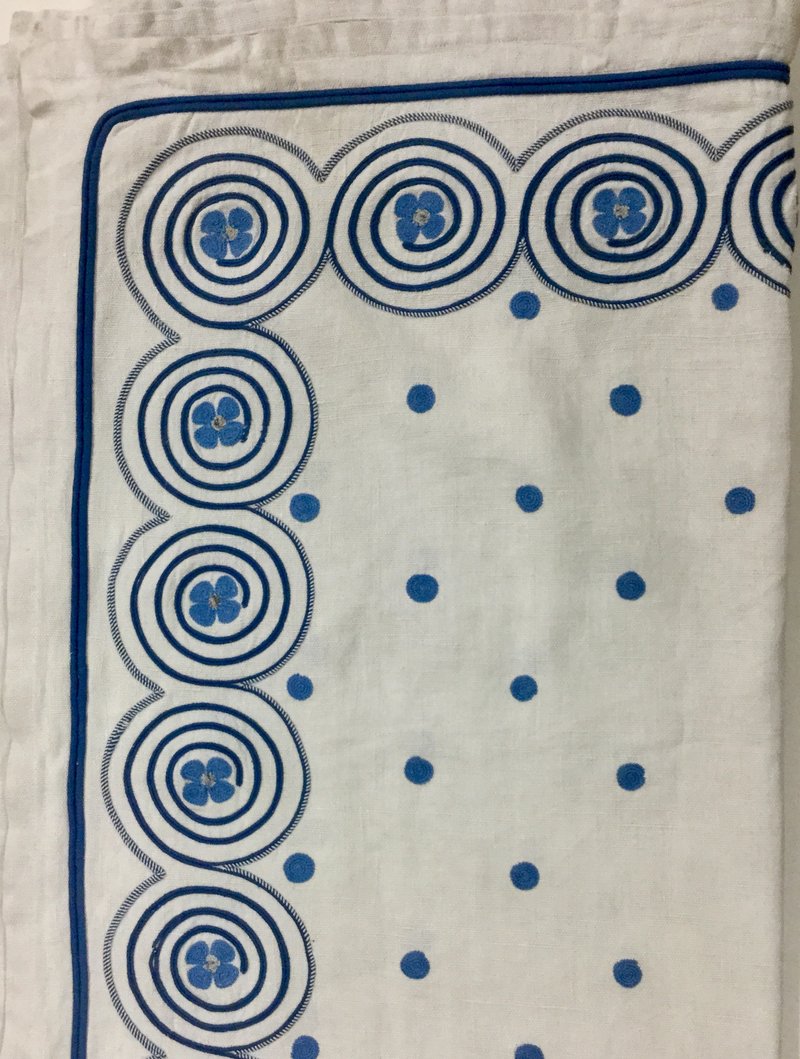
Detail of a tablecloth designed by Hedy Hahnloser and crank embroidery
Her work was offered for sale at fairs and later also sold in local stores. When the opportunity arose to expand her home and thus create a new interior, she didn't leave it to the architects – the men – but did it herself. Today, the Flora still bears witness to Hedy Hahnloser's immensely creative work and her design skills.
She received inspiration for her arts and crafts work from her friendship with Robert Rittmeyer, but also from her equally creative friend Julie Jung-Deutsch and the enterprising arts and craftsman Jules de Praetere, who reformed the School of Arts and Crafts in Zurich with 'revolutionary force', as the Neue Zürcher Zeitung put it, later becoming the founder and director of the Basler Mustermesse.
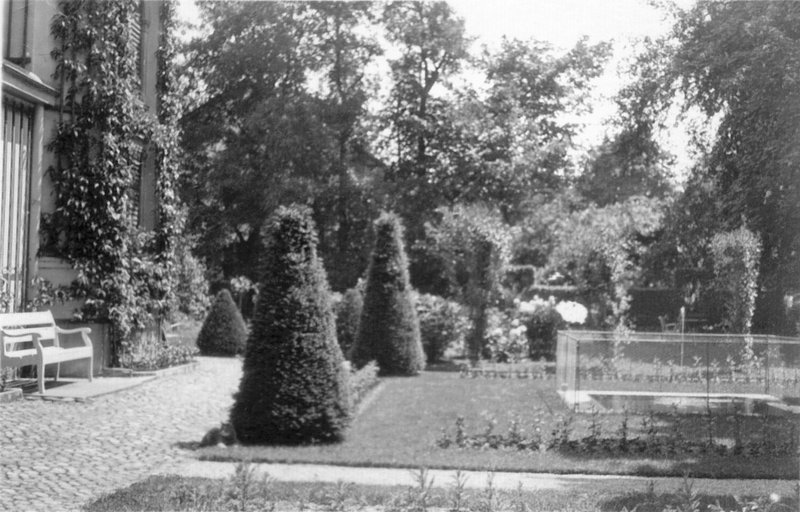
Pond and garden of the Flora around 1930
Hedy's cousin, Richard Bühler, also played an important role. He himself was active in design and actively promoted the arts and crafts. He was one of the co-founders of the Swiss Werkbund, of which he became the first president. Bühler was also involved in garden design and actively helped Hedy when she set about redesigning the Flora garden. The wealthy Bühler was also a great art lover and collector. For many years, he presided over the Kunstverein, whose artistic orientation he influenced together with Georg Reinhart. The paintings that Hedy and Arthur Hahnloser brought together in their Flora were particularly influential: the new and beautiful, the bold and creative thus found their place in Winterthur in a mutual exchange at various locations – and nowhere was it more harmoniously cast into a total work of art than in the Villa Flora.
By the way
Hedy Hahnloser loved fresh flowers. There was always a bouquet of flowers in her home – usually in front of Redon's flower still life.


